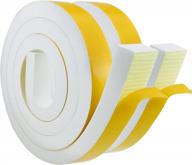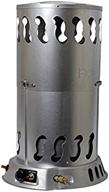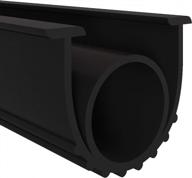
Review on 🌡️ Honeywell 5-2 Day Programmable Thermostat for Home by Christian Poojary

Good digital home thermostat
I have changed the thermostat before. But it's just as easy. This Honeywell thermostat controls both the gas stove and the air conditioner in my house, a bit more complicated. I'm having trouble understanding the schematic as my 40 year old thermostat has some wires that are misaligned. this new one. That's my problem, not the new thermostat's problem. I just need to take the time to learn about this device, to understand what each wire does to make the right connection. For now I'm giving 4 stars, will update when installed. UPDATE after installation: I have read manual page 4 and 5, it shows exactly how I connected my old thermostat and how I should connect this new one. There are 5 wires: 2 for 24VAC hot and common, one for heat, one for cooling and one for fan. Quite easy. I even tested these wires with a voltmeter to make sure that W, G and Y are turned on by the thermostat depending on the setting. I noticed that this thermostat does not support common 24V AC, so only 4 wires need to be connected. And the device requires 2 AAA batteries to operate. I then realized that having the fan set to AUTO means the thermostat isn't controlling the fan, and left it to the controller in the oven to turn the fan on/off (please correct me if I'm wrong here). I tested two Honeywell thermostats and the G-wire (fan controller) only turns on (shows 24 volts) when I turn the fan ON. When I set it to AUTO, that wire stays at 0 volts even though the W wire reads 24 volts (heater on). This thermostat is missing a feature that most might overlook. As a software developer who has written temperature code, I quickly noticed this weakness. Let me describe how this thermostat controls the heating: Let's say I set the temperature to 68 degrees, the house temperature was 60, the thermostat turns on the heating until the house temperature reaches 68 (expected). After a while (5 to 10 minutes) the temperature at home drops to 67 (expected), this heater is turned on again, the house temperature rises to 68. These events repeat themselves over and over again, which means that the stove is turned on and quite often out. A good design ensures a small temperature difference, e.g. B. 3. At a distance of 3 degrees, the script above works as follows: Set the temperature to 68 degrees, the house temperature was 60, the thermostat turns on the heating until the house temperature reaches 68 (expected). It takes quite a while (maybe 30 minutes) for the house temperature to drop to 65°C, the heating is turned on again until the house temperature rises to 68°C. That way, the oven (and fan) turns on and off less often, which means less irritation. , although it takes longer to run when it's on. I am very happy to buy a thermostat with this function. Please reply as a comment if any of you know.
- Tools and household goods
- Functionality
New products
Comments (0)
Top products in 🌡️ HVAC

Keep Your Home Comfortable With 6.5Ft Of White Foam Insulation Tape For Doors, Windows, And AC - Soundproof, Dustproof, And Cooling

34 Review

High-Performance Convection Heater By Mr. Heater Corp, Ranging From 75K To 200 BTU/HR

47 Review

Keep Drafts Out: 16Ft Long Silicone Seal Strip For Doors, Windows & Showers

33 Review

Universal Rubber Weatherstripping Kit For Garage Door Bottom Seals - Effective Replacement With Weatherproof Threshold Buffering & Sealing - 5/16" T Ends, 3 3/4" Width - 16 Ft Length

29 Review
Another interesting products

RF Remote Control Switch EMylo Smart Wireless Relay AC 110-240V 2000W 1 Channel Momentary 433MHz Module With 2 Transmitters

40 Review

Stylish & Safe: Sussexhome Carpet Stair Treads For Wooden Steps - 4-Pack Of Self-Adhesive, Pet & Kid-Friendly Indoor Treads To Prevent Slipping

51 Review

Protective And Stylish: XCEL 4Ft W X 5Ft H Black Steel Fence Gate With Anti-Rust Technology And Sharp End Pickets For Effortless Installation And Durable Outdoor Use

34 Review

IKSTAR EVA Thermal Plastic Door Cover 38" X 82": Insulated Magnetic Curtain Keeps Cool Summer, Warm Winter For AC Room, Kitchen & Stair - Brown

40 Review

